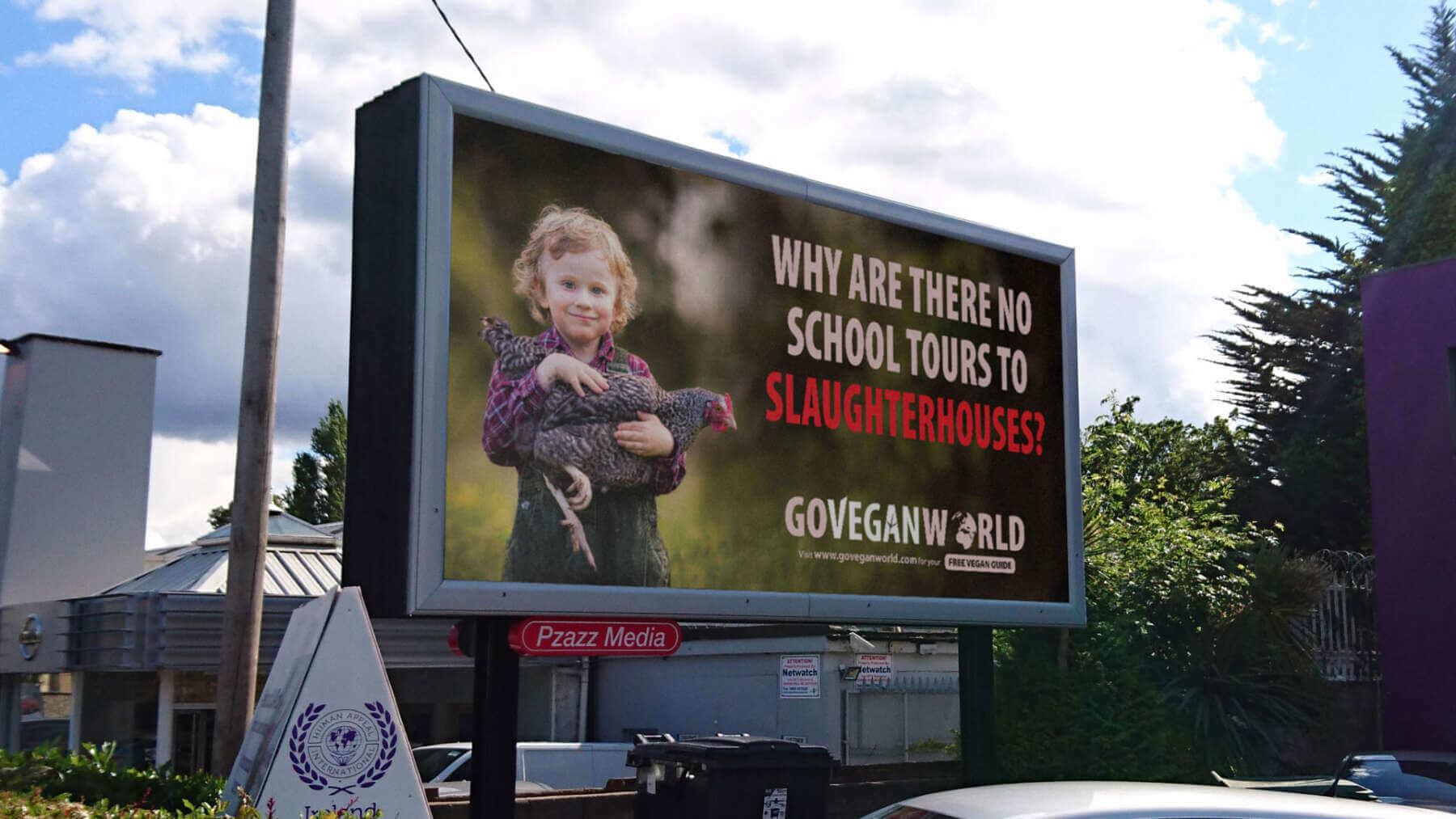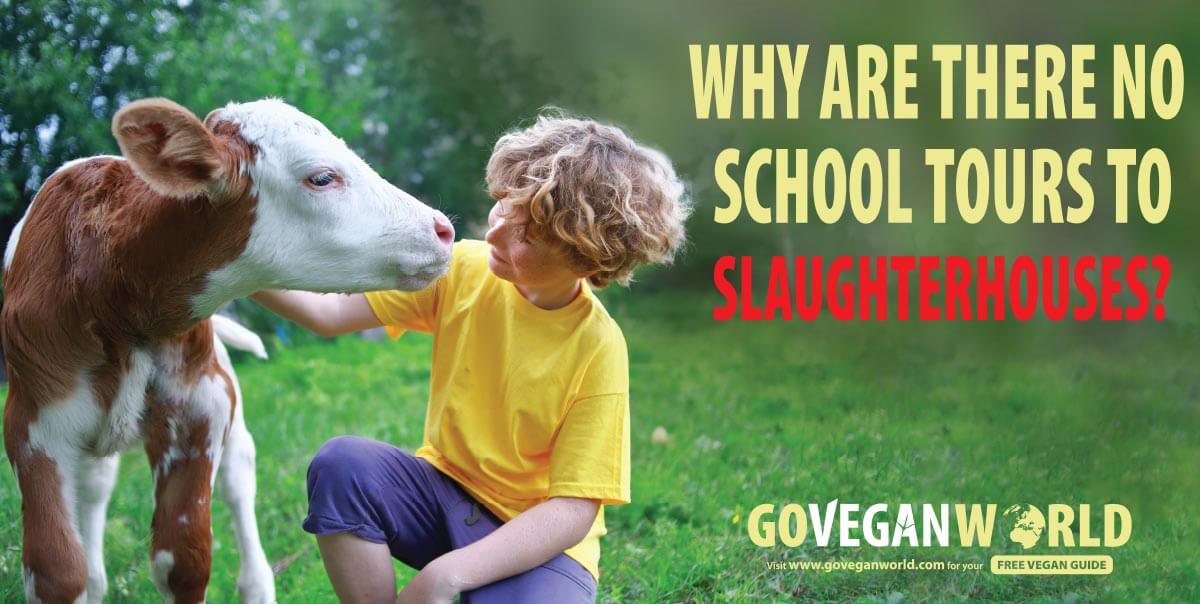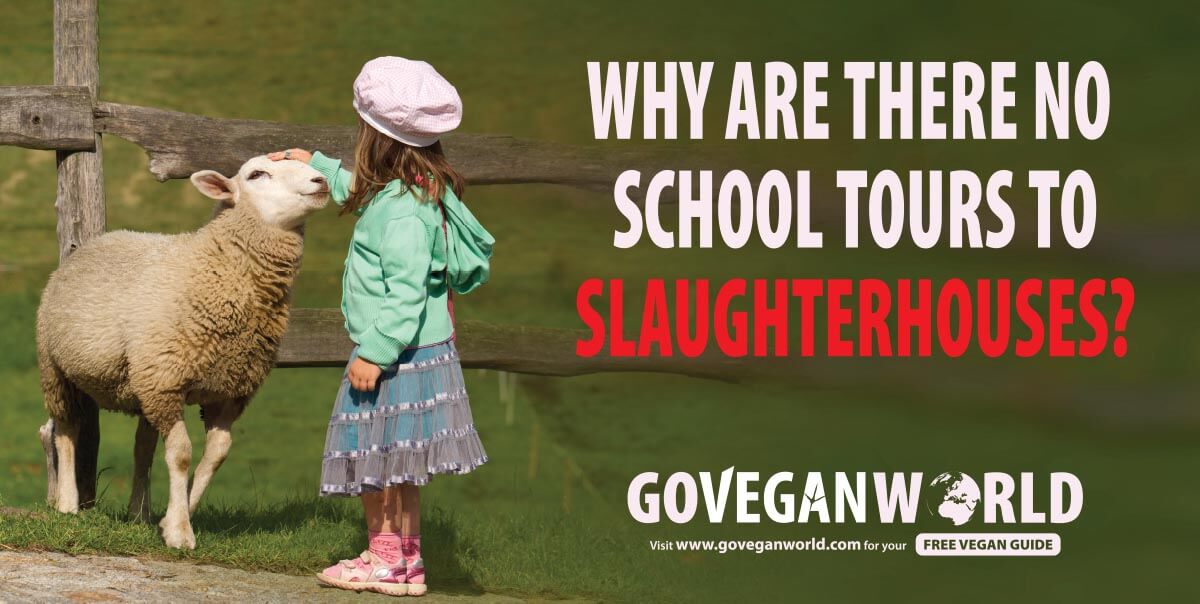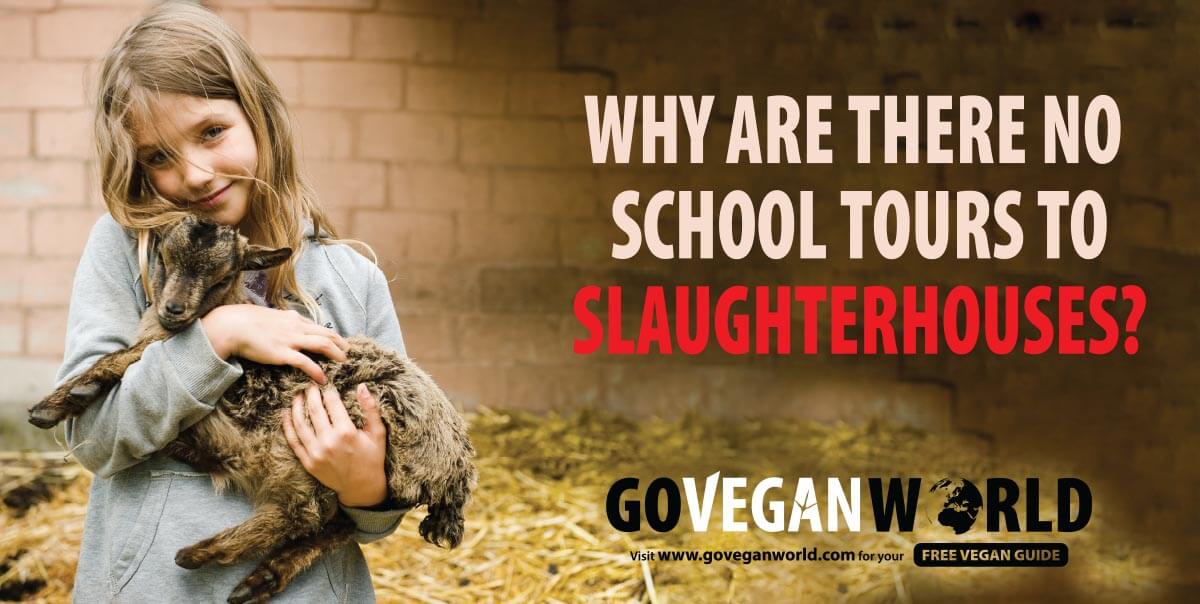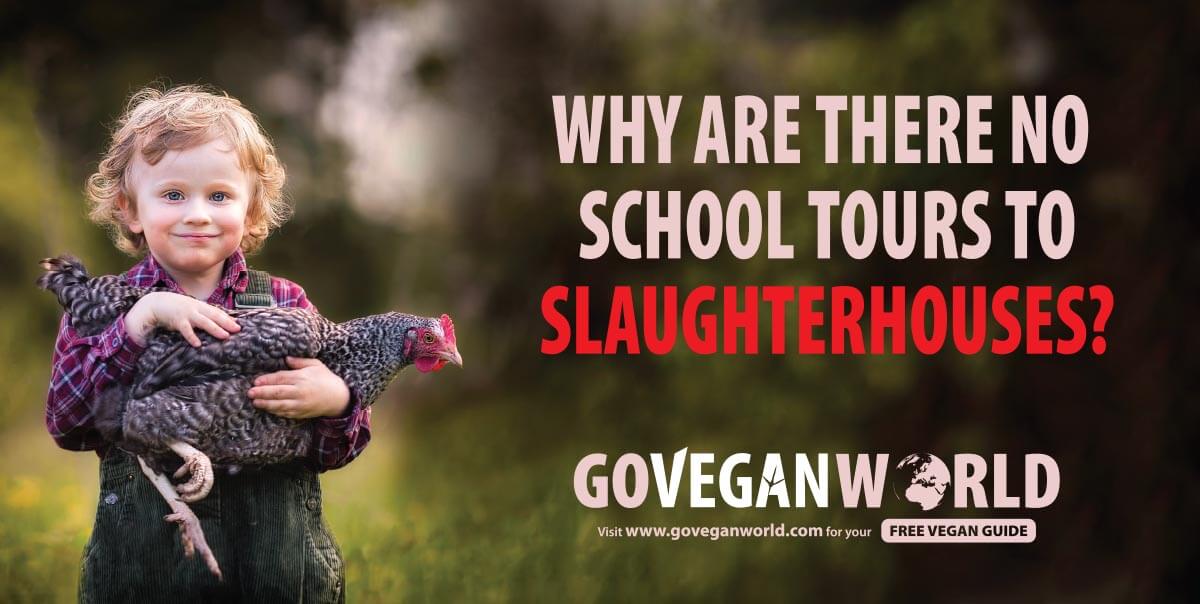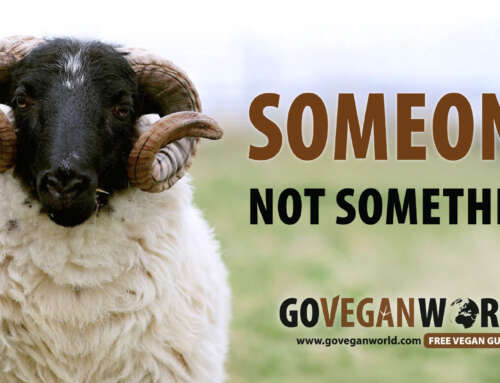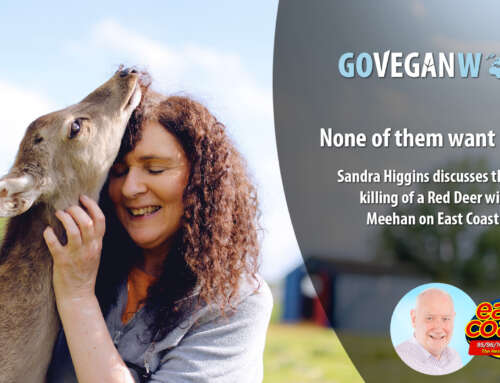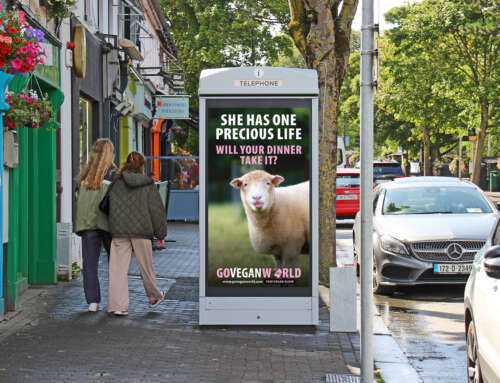Why Are There No School Tours to Slaughterhouses?
Most children do not regard difference as justification for harm. When they meet someone who looks different to them, they don’t automatically hurt them. They are usually curious, fascinated, friendly and respectful. We see this when they meet other animals. Most of their interactions with them are gentle, kind, and loving, regardless of their different species membership. Yet, despite their innate fairness, we teach them that other animals are commodities, that their lives are not as important as our taste, habit, and convenience; that their role in life is to live and die to serve human desires. We teach them slowly, surely, surreptitiously, through our socio-cultural norms, that it is acceptable to incarcerate animals for our entertainment, to torment them in research laboratories, and to kill, wear and eat them.
Few parents want their children to know the origins of their non-vegan food or clothing. How many children know that the cheese in their sandwich was made with the milk produced by a mother cow whose baby was taken from her? That their scrambled egg was laid by a chicken who will be slaughtered years before the natural end of her lifespan; whose brother was gassed or minced alive the day he was born? How many parents sit down to dinner and announce that their children’s meals contain the dead bodies of someone just like their beloved Peppa Pig?
Our World Vegan Month campaign poses a rhetorical question designed to help us consider why we teach our children to use other animals whilst carefully hiding the horrors inflicted on them when they are used as our resources. It would be highly unusual for any child to witness the gruesome violence of a slaughterhouse and escape without trauma. Indeed, it would be unusual for any of us to visit a slaughterhouse and not be wounded by the vicarious trauma of witnessing innocent, terrified animals being killed. Many farmers who have been on the stun and kill floors are shaken by the experience. Little wonder that few of them welcome the day their animals travel to the slaughterhouse to be killed. Little wonder the word slaughterhouse has been replaced euphemistically by the word ‘factory’. But they are not factories and the animals entering them are not inanimate, unfeeling objects. They are our comrades on this planet and despite being different species, they share our ability to feel, and they value their lives as much as we value ours. If you would object to your child being brought to a slaughterhouse, ask yourself if it makes sense to encourage them to grow to adulthood paying for the animal products that necessitate their existence. Isn’t factual education on animal sentience, animal rights and veganism the right of every child?

